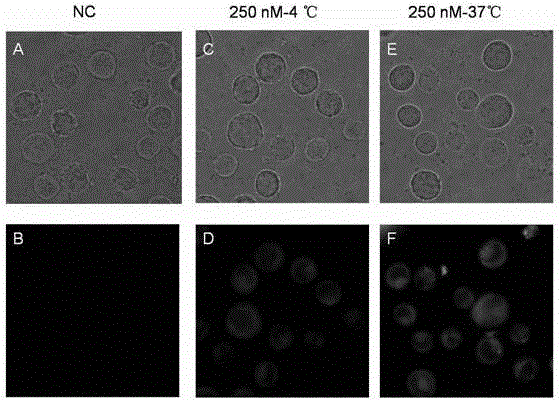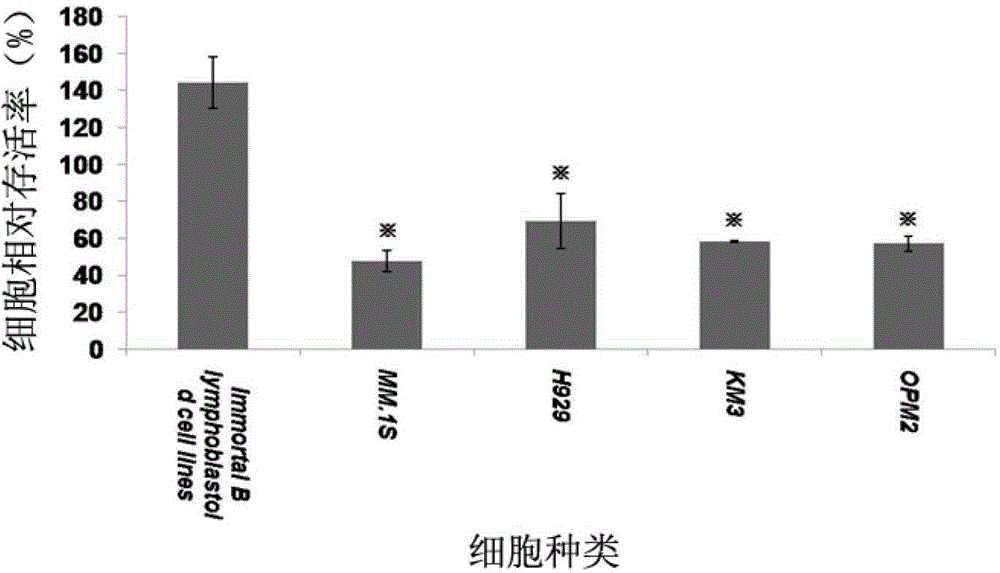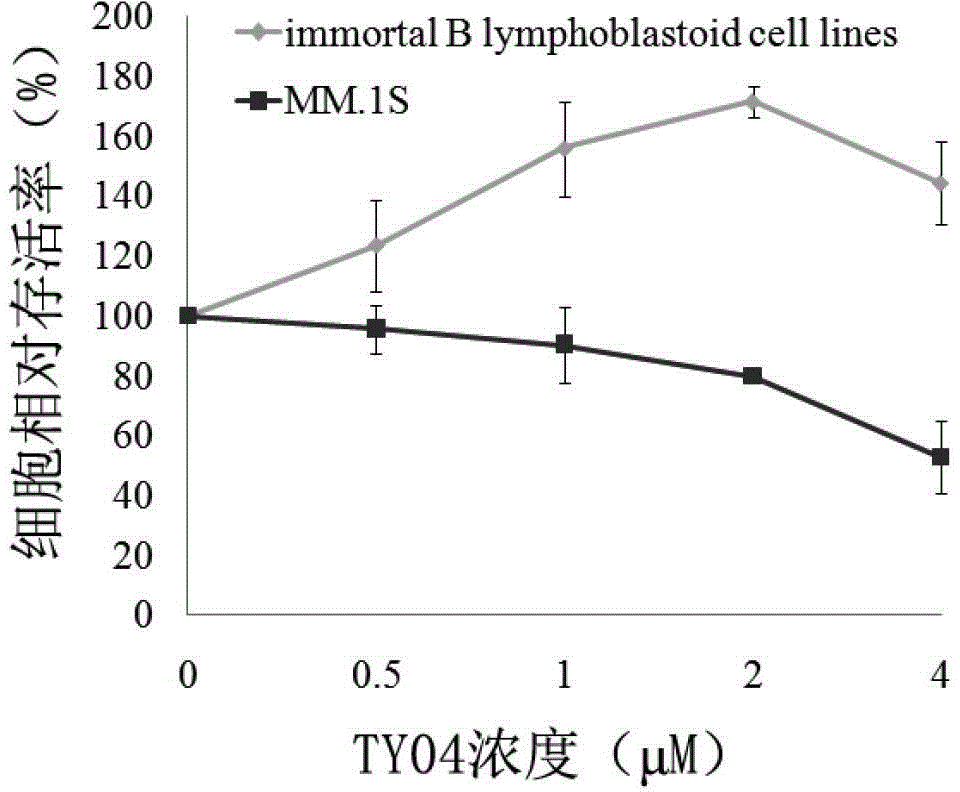Application of medicine or product prepared by aptamer and used for treating multiple myeloma
A multiple myeloma and nucleic acid aptamer technology, applied in the fields of biomedicine and clinical medicine, can solve problems such as difficult treatment and poor treatment effect, and achieve high affinity and high specificity effects
- Summary
- Abstract
- Description
- Claims
- Application Information
AI Technical Summary
Problems solved by technology
Method used
Image
Examples
Embodiment 1
[0023] In order to clarify whether the nucleic acid aptamer TY04 has an effect on the proliferation of multiple myeloma cell lines, we used the CCK-8 method to detect the 4μM TY04 treatment of multiple myeloma cell lines (MM.1S, H929, KM3 , OPM2) and normal human immortalized B lymphocytes (the concentration of the tested cells was 1×10 5 Individuals / ml) The relative survival rate after 96h. After three independent repeated experiments, it was found that the relative survival rates (%) of normal human immortalized B lymphocytes and different multiple myeloma cells (MM.1S, H929, KM3, OPM2) treated with TY04 were: 144± 13.81, 47.72±5.7, 69.42±15.1, 58.23±0.65, 57.08±4.24. Compared with normal human immortalized B lymphocytes, TY04 can lead to a significantly lower survival rate of multiple myeloma cell lines, with a statistical difference (Pfigure 1 Generally speaking, if the IC50 value at the cell level is within 10 μM, it has anti-tumor development potential). Further use CC...
Embodiment 2
[0025] In order to clarify whether TY04 inhibits the proliferation of MM.1S has sequence specificity, we further tested multiple myeloma MM.1S cells treated with different concentrations of ssDNA library and TY04 (0, 0.5, 1.0, 2.0, 4.0 μM) The concentration of cells was 3 x 10 5 Individuals / ml or so) growth after 96h. After three independent repeated experiments, the data were statistically analyzed, and the results were as follows: image 3As shown, it shows that compared with TY04, the ssDNA library has no effect on the proliferation of multiple myeloma MM.1S cells, further indicating that the nucleic acid aptamer TY04 has sequence specificity for multiple myeloma MM.1S cells.
Embodiment 3
[0027] In order to clarify the binding of nucleic acid aptamer TY04 to multiple myeloma MM.1S cells, the nucleic acid aptamer TY04 with FITC fluorescent labeling was mixed with multiple myeloma Tumor MM.1S cells (the concentration of the test cells is 1×10 6 cells / ml) after incubation, the binding of TY04 to the surface of MM.1S cells was detected by flow cytometry. The result is as Figure 4 As shown, the fluorescent nucleic acid aptamer TY04 has significant binding to multiple myeloma MM.1S cells, and the binding strength increases with the increase of the concentration. In order to detect whether the binding of nucleic acid aptamer TY04 to multiple myeloma MM.1S cells is specific, the ssDNA library with FITC fluorescent labeling was mixed with multiple myeloma MM.1S cells at different concentrations (0, 25, 125 nM). After the cells were incubated, the binding of TY04 to the surface of MM.1S cells was detected by flow cytometry, and the binding of fluorescent aptamer TY04 ...
PUM
 Login to View More
Login to View More Abstract
Description
Claims
Application Information
 Login to View More
Login to View More - R&D
- Intellectual Property
- Life Sciences
- Materials
- Tech Scout
- Unparalleled Data Quality
- Higher Quality Content
- 60% Fewer Hallucinations
Browse by: Latest US Patents, China's latest patents, Technical Efficacy Thesaurus, Application Domain, Technology Topic, Popular Technical Reports.
© 2025 PatSnap. All rights reserved.Legal|Privacy policy|Modern Slavery Act Transparency Statement|Sitemap|About US| Contact US: help@patsnap.com



